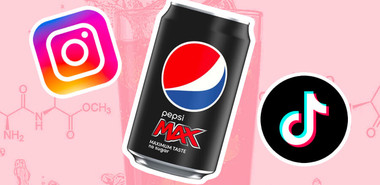
What is Inflammation?
Put simply, inflammation is a process that occurs when the body detects injury and can be a result of infection, toxins or an open wound. We associate inflammation with angry-looking red, hot, swollen and tender areas on the skin – this is what acute inflammation looks like. However, it’s not as widely known what chronic inflammation looks like, that usually takes place internally. Topical salves may be what’s best for the acute, external type of inflammation, but an anti-inflammatory diet is what’s best for the chronic type.
Chronic, low-grade inflammation can be described as low vitality or energy that can’t seem to be overcome. Constant feelings of fatigue, stubborn rashes, as well as aches and pains are common signs of underlying inflammation. If left unmanaged, this can eventually lead to conditions such as eczema, psoriasis, liver disease and rheumatoid arthritis, just to name a few.
What causes inflammation?
The most common causes are:
- Poor diet
- Stress
- Smoking
- Alcohol
- Drugs (including some legal prescription drugs)
- Obesity
Most people are aware that the above list are what cause countless conditions such as cancer, dementia, diabetes, depression and cardiovascular disease. This is because they are all factors that cause inflammation in the body, and an increasing amount of evidence is being shown linking inflammation as the root cause of disease (Hunter, 2012). This could be due to its link to the immune system, and that inflammation leads to oxidation in the body, putting strain on the body’s ability to fight foreign bodies or eliminate rogue cells that may begin to rapidly multiply and damage the body such as in autoimmune diseases.
The ‘Western Diet’
A higher percentage of Western populations following a typical Western diet experience chronic inflammatory disease than those following a more traditional diet with a higher amount of anti-inflammatory foods.
This is because the Western diet is largely comprised of omega-6 fatty acids and refined sugars, with little emphasis on plant-based proteins and vegetables, which are lucky to be considered a side dish in many meals. Let’s explore more into why this is an issue:
- The Omega-6 and Omega-3 Ratio: Omega-6 and omega-3 fatty acids both get absorbed using the same enzyme pathway. This means that they both compete to get absorbed in the body. Although we need both of these fatty acids to thrive, the Western diet is overrun with omega-6 fatty acids, not allowing much omega-3 to be absorbed and denying its’ anti-inflammatory action. To add to this, too much omega-6 fatty acids have been shown to trigger the release of pro-inflammatory chemicals, adding to the inflammation. A long time ago, humans traditionally enjoyed a ratio of omega-6 to omega-3 of about 2-3:1, whereas today it is about 15:1. When people balance their ratio today, markers of inflammation in the blood decrease dramatically
- Refined Sugars: The intake of highly refined carbohydrate foods causes a spike in blood sugar after consumption, which activates a systemic stress response and in turn, an inflammatory response (Dickinson et al., 2008). This kind of inflammation doesn’t last long, however since these foods are so prevalent in the Western diet, it happens so often that the inflammation is almost constant. High blood glucose also encourage the synthesis of advanced glycation end-products (AGEs) which are known for triggering a strong inflammatory response (Barone, 2017).
The Anti-Inflammatory Diet
So how can you avoid inflammation? The answer is in the name: the anti-inflammatory diet.
It’s a diet that aims to include foods that decrease inflammatory components and exclude foods that are pro-inflammatory. It’s largely plant-based, making it a diet that is rich in antioxidants and phytochemicals to prevent oxidation. In addition to omega-6 fatty acids and refined sugars, a high consumption of animal protein has been shown to increase inflammation. However, unless you are knowledgeable about extracting nutrients from a vegetarian or vegan diet, it is not recommended to cut out animal protein entirely without consulting a nutritionist or dietitian.
What are the key foods to include in this diet?
- Oily fish – SMASHTT: Salmon, Mackerel, Anchovies, Sardines, Tuna & Trout are all fantastic options for fish rich in omega-3. This is by far the best way to achieve a higher ratio of omega-3 to omega-6 fatty acids. A budget-friendly way to do this is to have a can of sardines a few days a week for lunch and intersperse different types of oily fish for dinner time on the days you aren’t eating sardines for a variety of fish.
- Herbs and spices – Increase your use of these wherever possible, they all have unique phenolic compounds with antioxidant effects. Cloves has been identified to be the most potent antioxidant out of all herbs and spices (by a long shot), so finding a few recipes with cloves in them to add to your repertoire will be highly beneficial in lowering inflammation.
- Fruits and vegetables – A variety of fruits and vegetables are what’s recommended here. Instead of giving you a list of fruits and vegetables, aim to eat a rainbow of fruit and veg every day, and you get bonus points if they’re organic and in season. For example, breakfast can have orange and yellow capsicum with an egg, lunch can be blueberries with Greek yoghurt, and dinner can be a baby spinach, red onion and tomato with a garlic dressing on white fish.
- Drink your cocoa and green tea – these are both rich in polyphenols, try not to sweeten your cocoa too much if having it in a drink form. Opt for a dark-chocolate version, or simply have a couple of chunks from a 70% or more dark chocolate bar. A cup of green tea with this sounds like an optimal dessert for both reducing inflammation and increasing happiness.
- Lastly, fermented foods – by nourishing your microbiome, you will increase the number of good bacteria in the gut that can produce anti-inflammatory factors and regulate the immune system. Kefir, kimchi, sauerkraut, kombucha and Greek yoghurt are all great places to start and can be added to your meals quite easily.
Please Note: If you’re unsure if you have a case of low-grade, chronic inflammation, ask your doctor to do a C-reactive protein (CRP) blood test to find out. This is an especially good idea if you or your family have a history of autoimmune or cardiovascular disease. This diet is not harmful for those who do not have underlying low-grade chronic inflammation, but you’re advised to speak to your doctor about this diet before commencement as well to be certain you remain safe.



